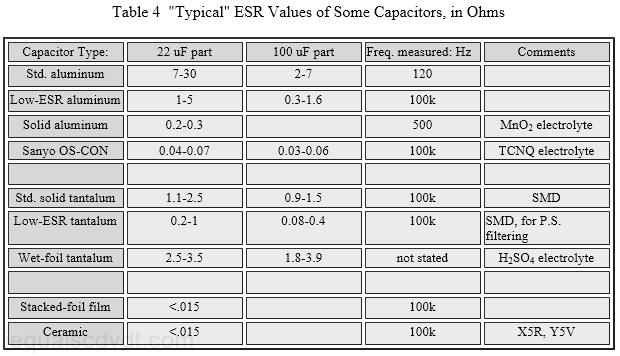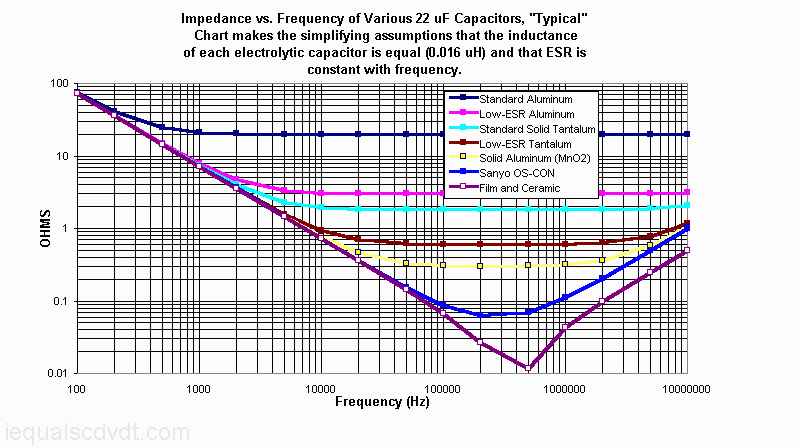The main (if not only) limiting factor in high-frequency performance (in switching power supplies, for example) for large filter capacitors is the Equivalent Series Resistance or ESR. In fact, switcher designers tend to think of capacitors in terms of their ESR instead of their capacitance. A lot of work has gone into developing new low-ESR capacitor technologies and improving existing ones. Kemet, for example, has introduced a series of SMD tantalums that are made of three capacitors in one package, for reduced ESR and better frequency response. Table 4 shows representative ESRs for various capacitor types, taken from literature from several manufacturers. The actual ESR will depend on the manufacturer, capacitor working voltage, and other factors. "Low ESR" means different things to different manufacturers. For aluminum electrolytics, ESR drops as working voltage increases, and I suspect that some designers of video equipment use aluminum capacitors with high working voltages to get lower impedance in the video frequency range. ESR is also dependent on capacitor shape; tall and thin electrolytics tend to have lower ESRs than short, squat ones.
Film and ceramic capacitors, if actually available in the sizes shown, would be expected to have lower ESRs than any of the electrolytics. Manufacturers now make non-TCNQ polymer-aluminum capacitors with performance better than OS-CON capacitors. Some types of capacitors are not included, such as liquid-solid hybrid aluminums that are better than liquid electrolytes but not as good as solid electrolytes. They are priced accordingly.
These numbers assume a capacitor temperature of about 25C. Some aluminum electrolytics can vary 50:1 or more in ESR over their specified temperature range, the main problem being cold. ESR can also be expected to vary considerably from part to part and from lot to lot, especially for parts whose ESR is not specified by the manufacturer. Age will also take a toll, as the aluminums dry out their ESR will increase. Tantalums are better in most regards, they tend to be more stable with temperature and are much more stable with time. Ceramic and film capacitors also vary, but by a lesser amount.
The graph below demonstrates the affect of ESR as a limiting factor in high-frequency capacitor impedance.




